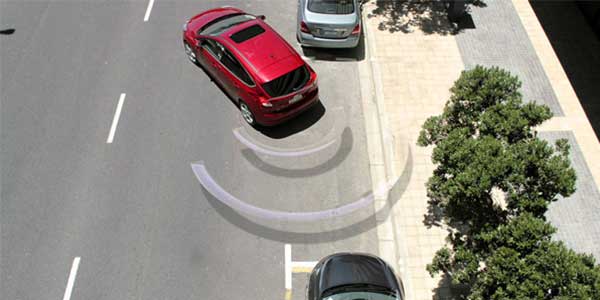
Understanding how advanced driver-assistance systems work is a key aspect of diagnosing problems with the technology – and avoiding replacing parts that aren’t causing the system issues.
On the I-CAR Repairability Technical Support portal, I-CAR explains that there are two types of park-assist systems: park assist and active park assist.
“Park assist uses sensors in the rear and/or front bumper covers to sense the distance between the vehicle and the object,” I-CAR explains. “Active park assist uses the same sensors in the front and rear bumpers. However, there are generally more sensors used.” Typically, those additional sensors are located in the sides of the bumper or in the fender.
While park assist normally only makes a sound and/or displays an image to show the distance between the vehicle and the object, active park assist will engage other vehicle systems to physically park the vehicle.
Park-assist systems typically use ultrasonic sensors, according to I-CAR.
“An ultrasonic sensor uses sound waves to detect the distance to an object,” I-CAR explains. “The sensor sends out and receives the sound wave after bouncing off a detected object. The time it takes for the sound wave to return determines the distance the object is from the sensor.”
For more, read I-CAR’s “Understanding the Park Assist System.”
Article courtesy BodyShop Business.













